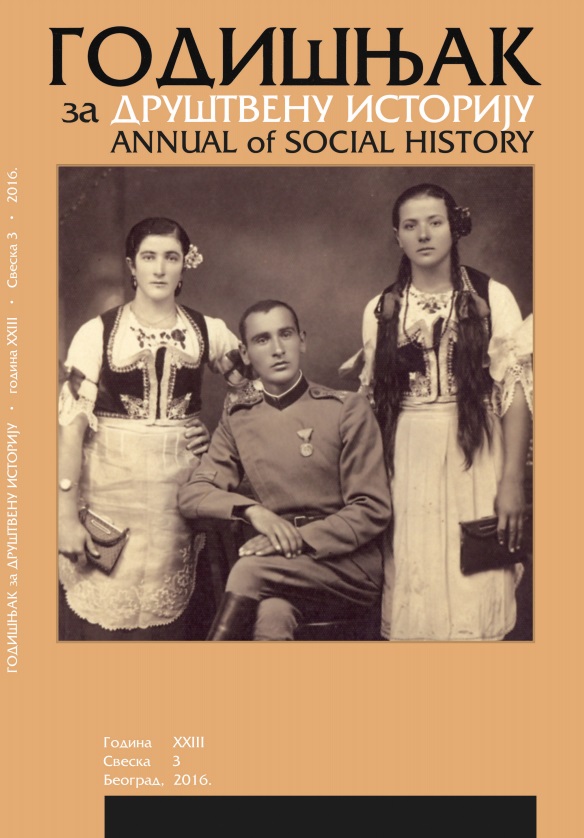Култ светитеља, места сећања и политички митови: пример манастира Вујан, гробне цркве породице Луњевица
The Cult of Saints, Places of Remembrance and Political Myths: Example of Vujan Monastery, Burial Church of Family Lunjevica
Author(s): Miloš TimotijevićSubject(s): Cultural history, Culture and social structure , Nationalism Studies
Published by: Udruženje za društvenu istoriju
Keywords: Vujan Monastery; the cult of saints; heroes of the nation; places of remembrance; political myths; Nikola Milicevic Lunjevica Queen Draga Obrenović; Lazar Mutap; Patriarch Pavle f
Summary/Abstract: Symbolic topography of monastery Vujan contains several layers of different traditions which are during past two centuries transformed into a unique “pantheon”, based on respect for the cult of saints and national heroes. The medieval cult of an unknown saint, the tomb of Lazarus Mutap, Duke of the First and Second Serbian revolution, then the worthy Abbot Hadzi Josif Milošević and special Lunjevice Nikola Milicevic, founder of the reconstruction of the temple in 1805 were important elements of the local places of remembrance. The transition from regional to state character was established during the Queen Draga Obrenovic (1900-1903), granddaughter of Nikola Milicevic Lunjevice. In this way the monastery Vujan became important “place of memory”, an example of the construction of new political myths and traditions that are still open to new expansion and reassessment. Replacement of dynasty in Serbia in 1903, caused the marginalization of memories of family Lunjevica. Cult of an unknown saint has never disappeared, and national heroes buried in Vujan didn’t lost social importance even during socialism. After the breakup of Yugoslavia, were restored the old memories of the national past, the monarchy, Orthodoxy. Many individuals and political groups have expressed interest in the renewal of memories of the character of the monastery Vujan in the past, with special emphasis on the fact that it had a short-lived and healed the future Patriarch Pavle, especially from the perspective of his possible canonization.
Journal: Godišnjak za društvenu istoriju
- Issue Year: XXIII/2016
- Issue No: 3
- Page Range: 33-63
- Page Count: 31
- Language: Serbian

